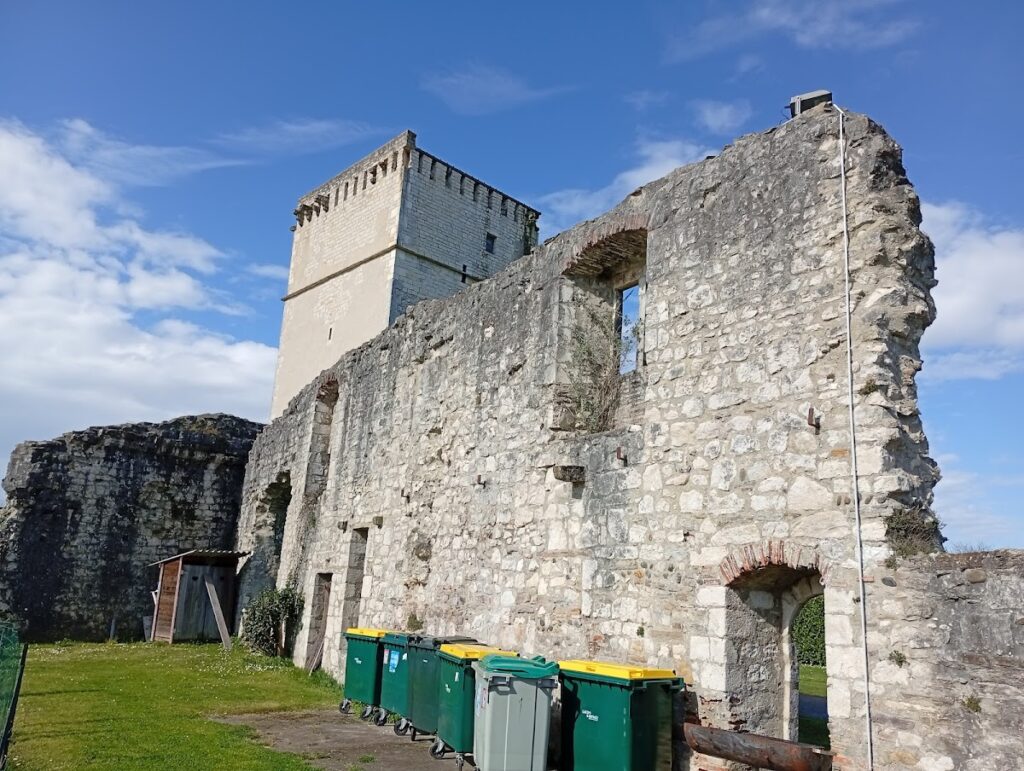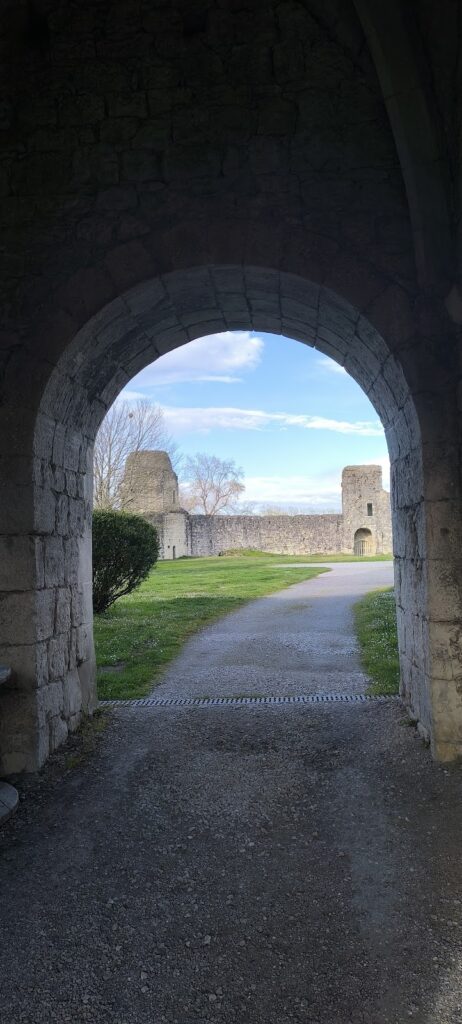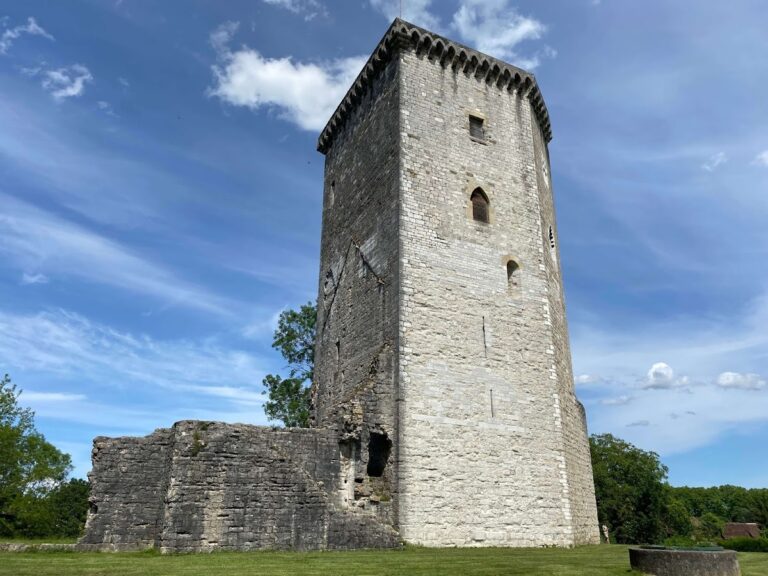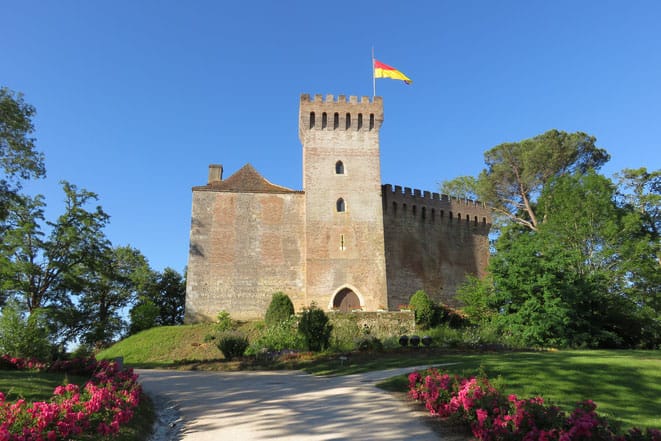Château de Bellocq: A Medieval Fortress in Béarn, France
Visitor Information
Google Rating: 4.5
Popularity: Very Low
Google Maps: View on Google Maps
Country: France
Civilization: Unclassified
Remains: Military
History
The Château de Bellocq is located in the village of Bellocq, France. This fortress was built by the medieval territory of Béarn, a principality that sought to protect its borders during a period of frequent conflicts in southwestern France.
Construction of the castle began around 1250 under the direction of Gaston VII of Béarn. Positioned on a rocky outcrop beside the Gave de Pau river, which served as a vital access route into Béarn, the castle was part of a strategic defense against the neighboring English-controlled region of Guyenne. Shortly after the castle’s completion, Gaston VII founded a bastide, a type of fortified town, close to the fortress. The bastide and the nearby fortified church of Bellocq formed a united defensive network, safeguarding the frontier and supporting local administration.
In the late 14th century, around 1370, Gaston Fébus, a powerful Béarnese ruler, undertook improvements to strengthen the castle. He also built additional fortifications to assert Béarn’s independence amid the ongoing struggles involving the kingdoms of France, England, and Navarre. This period marked the castle’s role not only as a military stronghold but also as a symbol of local authority.
During the 16th century, Henri II of Navarre enhanced the castle further in 1542, anticipating threats from Spain. The Navarrese royal family sometimes preferred Bellocq to their main palace in Pau. Jeanne d’Albret, queen of Navarre and mother of the future King Henry IV of France, frequently stayed here while visiting the nearby saltwater baths of Salies-de-Béarn. This era highlighted the castle’s role as both a defensive site and a noble residence.
In 1568, amid the French Wars of Religion, the French crown sent the baron of Terride to reconquer Béarn and restore Catholic control. The castle was seized by Catholic forces, and the following year it endured a siege by Gabriel de Montgomery, an ally of Jeanne d’Albret. This episode reflects the castle’s involvement in religious and political conflicts of the time.
By 1620, with Protestant influence resurging in Béarn, King Louis XIII ordered the castle to be burned to prevent its use by Protestant forces. Starting in 1622, the fortress was partially dismantled, marking the end of its military and administrative importance in the region. From this point on, the Château de Bellocq ceased to play a significant role in local affairs.
In the 20th century, recognition of the castle’s historical value led to its designation as a monument historique in 1925. It received official classification as a French historical monument in 1997, acknowledging its place in the history of Béarn and France.
Remains
The Château de Bellocq stands as an irregular quadrilateral fortress constructed directly onto a rocky outcrop overlooking the Gave de Pau river. Its walls, rising to about seven meters, were built to house a sizeable garrison from the beginning, reflecting its defensive purpose. The enclosure originally featured seven towers of varying shapes: four round towers, one semicircular tower, and two square towers. Among the square towers was the main gatehouse, which contained a drawbridge to control access.
The castle’s curtain walls were topped with crenellations, the notched battlements allowing defenders to shield themselves while observing or firing upon attackers. These walls were pierced with cruciform arrow slits—narrow openings shaped like crosses to provide protection for archers while offering a wide range of fire. This design illustrates the military engineering techniques typical of the 13th and 14th centuries.
Connected to the fortress was a fortified house erected in 1281, showing an expansion of the complex to combine residential and defensive functions. During the 14th century, the castle underwent remodeling to adapt to evolving military needs, likely under the direction of Gaston Fébus, who reinforced its defenses during a turbulent political era.
Today, the Château de Bellocq remains in ruins but retains clear traces of its original layout. The outlines of the walls and towers can still be followed, providing a tangible link to its varied history. These remnants offer insight into the construction methods and strategic considerations of medieval fortifications along this once-contested frontier.







